Threadripper 1900X joins the HEDT party, priced at $549
Lots of cores and threads, coming August 10.

AMD held another Tech Day—the third this year, if you're keeping track—just before SIGGRAPH kicked off in Los Angeles. During the presentations, AMD briefed press and analysts on its upcoming Threadripper and Vega products, both of which are due to launch in August. I've covered the details of the Vega announcement elsewhere, and much of what we heard about Threadripper isn't new information, but AMD did give us a few juicy morsels, along with a previously unannounced 8-core product.
Let's start from the top with the Threadripper specifications, adding in the newcomer. In fact, since this should mark the end of new Ryzen CPU announcements for a while, let's just cover the entire gamut:
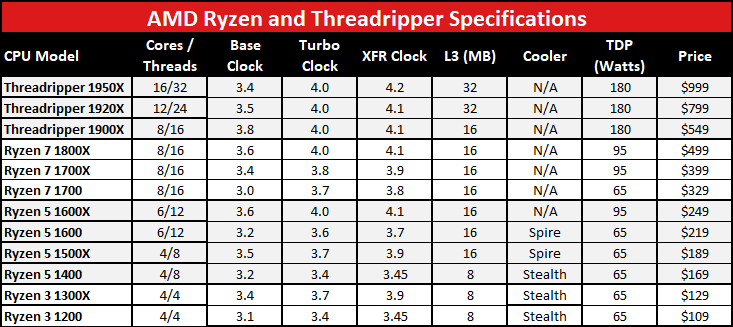
From budget systems through the top high-end desktops (HEDT), AMD has a processor it would love to sell you. Perhaps more importantly, at every price point it will give you more cores and/or threads than Intel. Threadripper is the culmination of the Ryzen family, boasting up to 16-core/32-thread configurations all running on the X399 platform and TR4 socket.
As I showed in the Ryzen 3 review, AMD has clear levels of performance that scale nicely with each price increase, particularly when it comes to CPU-centric workloads. The 1300X is about 15 percent faster than the 1200, the 1400 beats the 1300X by another 15 percent, then 12 percent from there to the 1500X. As you start adding more cores, the jumps in performance become somewhat more pronounced, with the 1600 beating the 1500X by 30 percent, the 1600X beats the 1600 by 9 percent, and finally the 1800X beats the 1600X by 20 percent. (I still need to retest the 1700 and 1700X, but those basically fill in that gap).
While there's clearly an overlap between the newly announced 1900X and the 1800X, the Threadripper model should be faster for a couple of reasons. First, it has a slightly higher base clock, plus substantially more TDP headroom. Second and perhaps more importantly, it will have quad-channel memory support. That won't matter for all workloads, but there will definitely be cases where doubling the memory bandwidth will pay off.
Something else to note here is that AMD says all Threadripper CPUs received the 'best' CPU cores from the Ryzen wafers. That might be a bit surprising—isn't the 1800X supposed to be the top of the product stack up until now?—but AMD claims the top five percent of CPU die were preselected for Threadripper. Does that include the 1900X and 1920X, where some of the cores are disabled? I couldn't say, but one reason for using higher quality cores is that AMD wants to keep power requirements and thermals down as much as possible, and 16 cores in a single package can definitely use a lot of power.
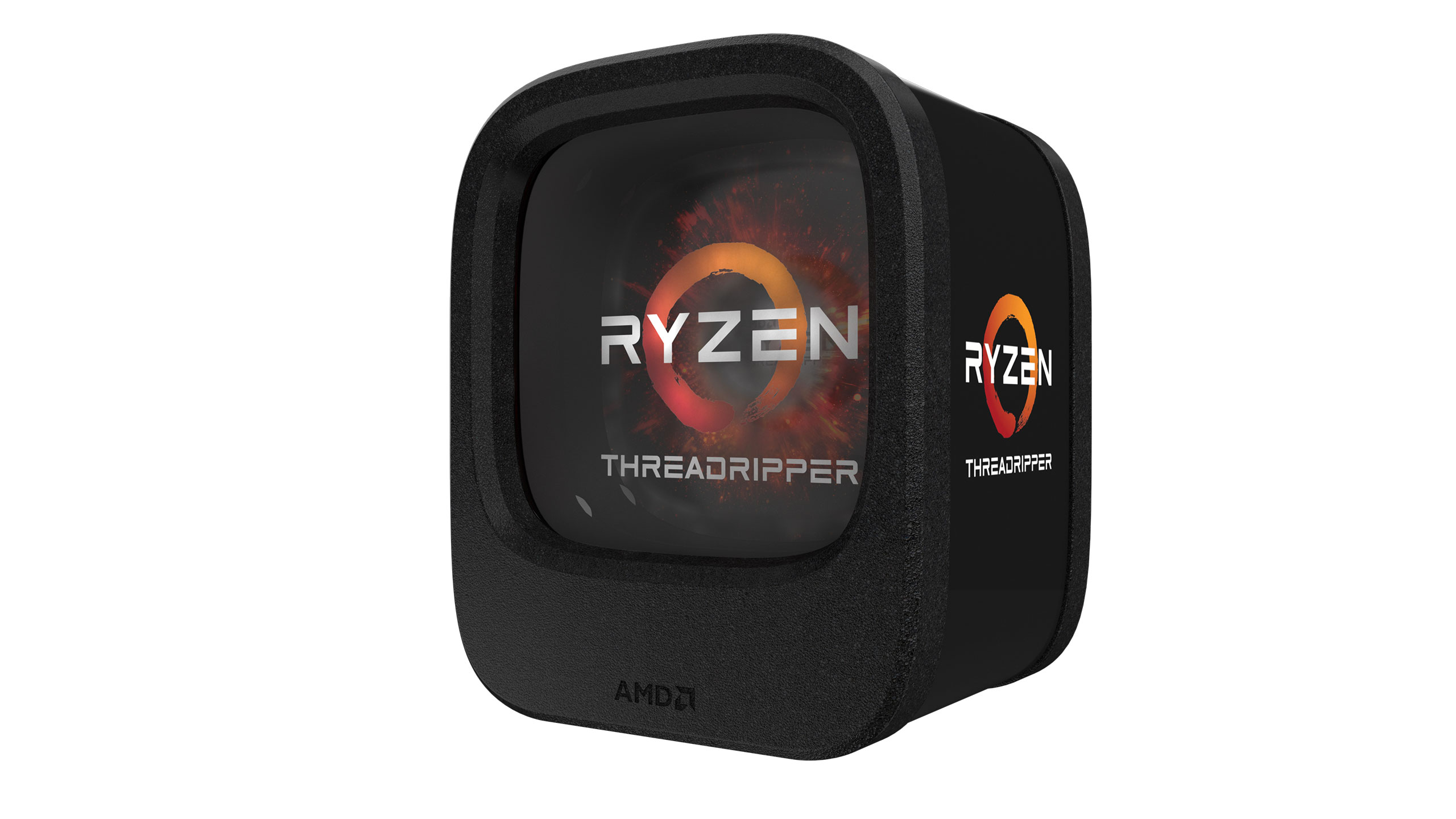
Besides the 1900X, there's not a whole lot to add to what we've said previously about Ryzen and Threadripper. The architecture remains the same, and AMD's Infinity Fabric has been put to good use, allowing it to cluster up to four CPU die on a single package (Epyc).
Keep up to date with the most important stories and the best deals, as picked by the PC Gamer team.
One thing that does need clearing up is that the Threadripper package, should you choose to delid your CPU, appears to include four CPU die. We've been informed that this is for structural integrity, since the socket was designed with the four die of Epyc in mind. Two of the silicon chips are functional Ryzen die, while the other two chips are 'dummy' placeholders that allow the heatsink to apply even pressure.
Given the use of what appears to be the same socket for both Epyc and Threadripper, something else to note is that the two are not compatible. AMD took the existing work of Epyc and repurposed it for Threadripper, which helps with the time to market (and probably helped to catch Intel off guard). But the pins are not used the same, and Epyc supports 8-channel memory plus dual socket solutions among other things. What would happen if you placed a Threadripper in an Epyc server socket, or vice versa? AMD says it won't work, and you could very well end up with a dead chip—not something we'd recommend trying with a CPU that could cost $1000 or more!
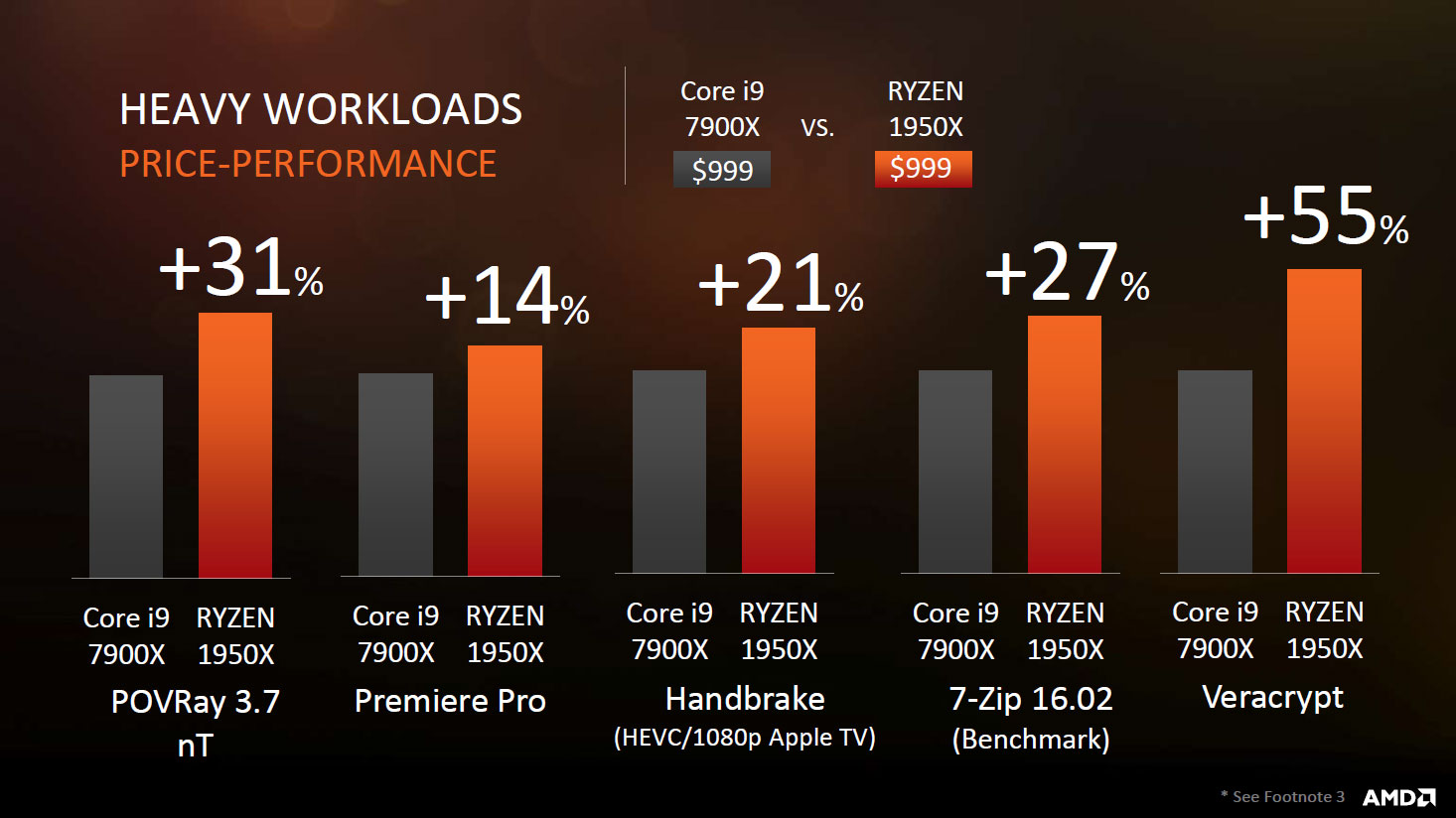
Here's what you need to know about Threadripper, and this is a message AMD repeated many times. It's not for gamers—or at least, it's not for people who are only interested in playing games. Having a 16-core/32-thread processor can enable some impressive workloads, and it's likely going to blow away Intel's $999 i9-7900X in most CPU-centric benchmarks. Gaming performance on the whole will likely be similar to the Ryzen 7 1800X, which would be slower than Core i7/i9.
Instead of gamers, Threadripper is for creators who play games—or gamers who also create. The best workloads for Threadripper are things like 3D modeling, CAD/CAM, video editing, virtualization, and other heavy workloads. AMD's benchmarks show the 1950X beating the similarly priced 7900X by impressive margins, and even the 1920X is typically a bit faster than the 7900X. Power use is also relatively similar, meaning AMD wins the performance/watt assessment as well.
What does that mean in practice? It means if you're the type of user who wants to do a CPU-based video encode of a livestream while gaming, with a 3D render in the background, with a video running on a second monitor, Threadripper has you covered. It's like having four Ryzen 5 1500X systems in a single box in a sense. Or if you just want to get serious work done, Threadripper can do that as well.
One thing you won't need to do with Threadripper is compromise on things like PCIe lanes or memory channels. All Threadripper CPUs will support the full 60 PCIe lanes off the CPU (with four more PCIe lanes for the X399 chipset connection). That gives AMD a modest 36 percent advantage in PCIe lanes against Intel's top Core i9, but for the i7-7800X/7820X AMD will give users over twice as many PCIe lanes.
Do you want a workstation for running computational modeling on GPUs? Put six GPUs into a Threadripper build, and you can still add an M.2 PCIe NVMe drive. Or you could have multiple NVMe drives, a couple of graphics cards, a 10GbE adapter, and an HDMI capture card. Or… well, you get the point.
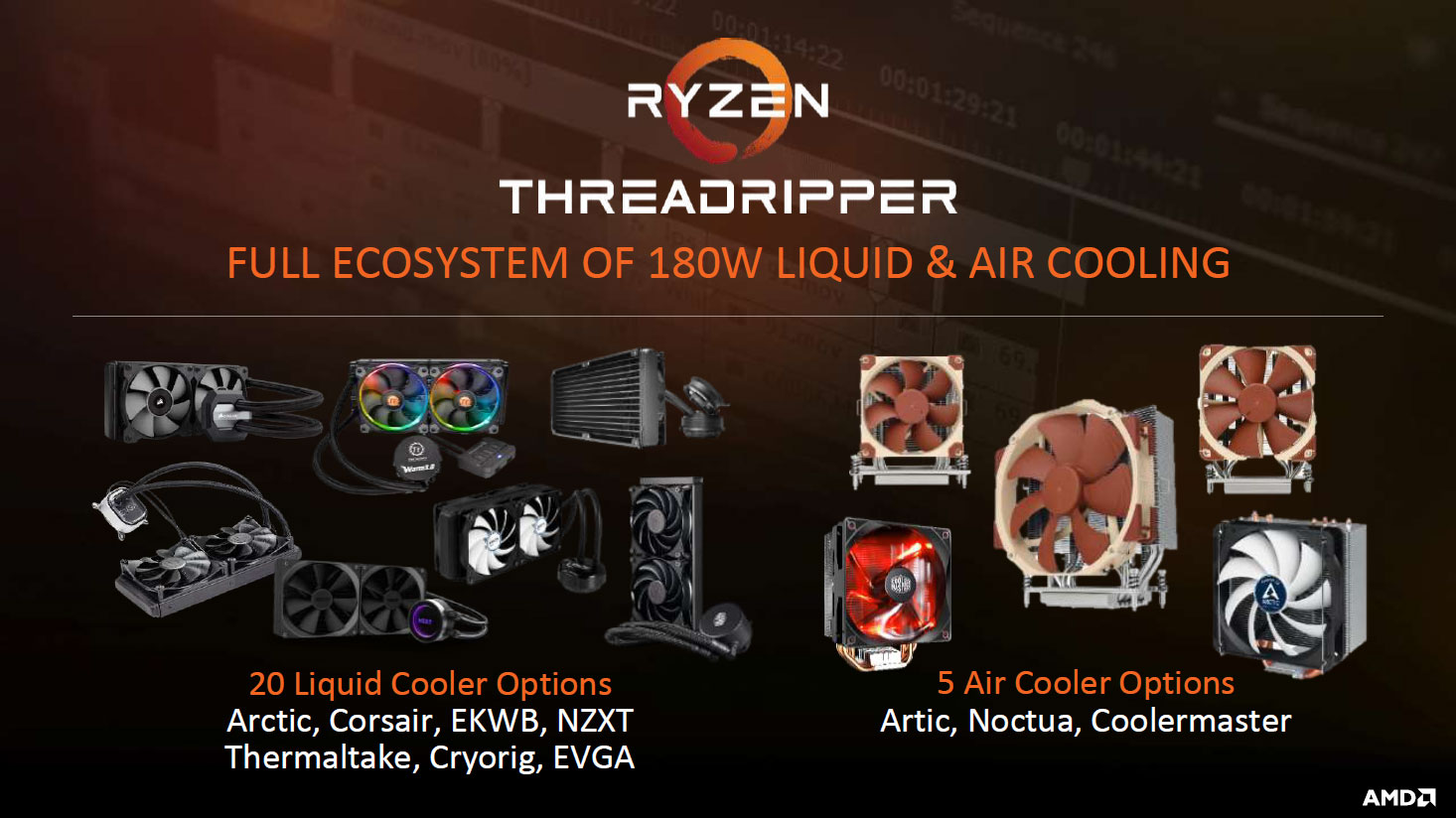
AMD has also worked to make Threadripper compatible with existing cooling solutions, despite the rather drastic change in socket size. The Threadripper packaging includes a CPU mounting bracket that will work with existing liquid coolers based off the Asetek water blocks, which means support for coolers from Arctic Cooling, Corsair, EKWB, NZXT, Thermaltake, and more. There will also be air-cooler support from Arctic Cooling, Cooler Master, and Noctua.
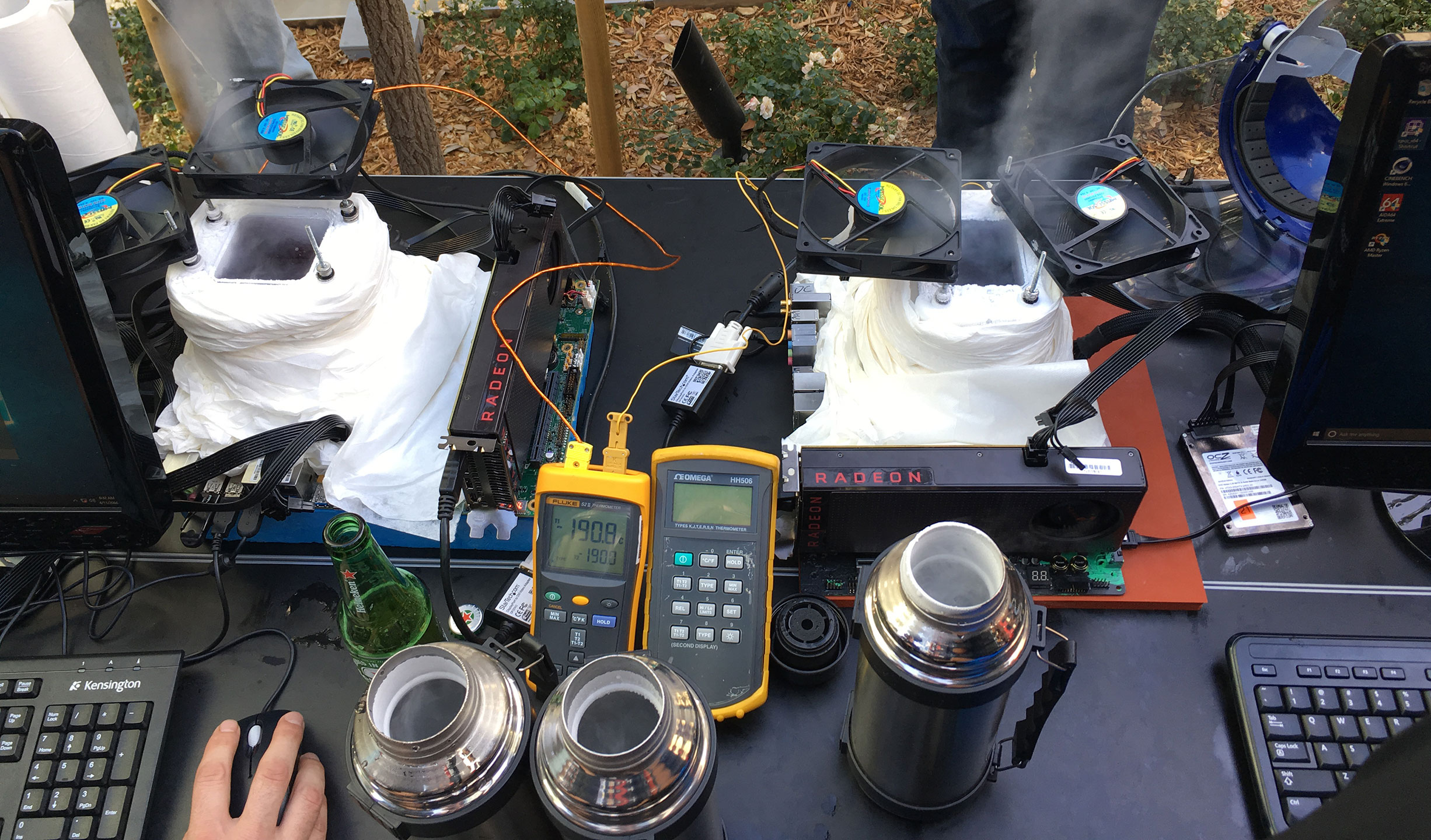

What about overclocking? AMD had some liquid nitrogen on hand for an overclocking event, looking to set some records for 16-core performance. The final best result was nearly 5.2GHz on all 16 cores, with a Cinebench 16 nT score of 4122. What does that mean for more mundane methods of overclocking, like for those with liquid coolers? Probably less than 4.0GHz for all cores, though 3.6-3.8GHz might be doable.
For gamers that don't really do anything more CPU intensive with their PCs, the mainstream Ryzen parts are a better choice overall, or one of Intel's CPUs. But if you're looking to create as well as game—whether that's software development, video editing, CAD, or some other equally heavy workload—Threadripper is getting ready to rock the world. And the impact of AMD's Ryzen is already being felt, with Intel launching more aggressively priced 'enthusiast' CPUs than the previous generation, including an 18-core part with the i9-7980X. Competition is a good thing, and we're glad to have AMD crashing Intel's HEDT party.
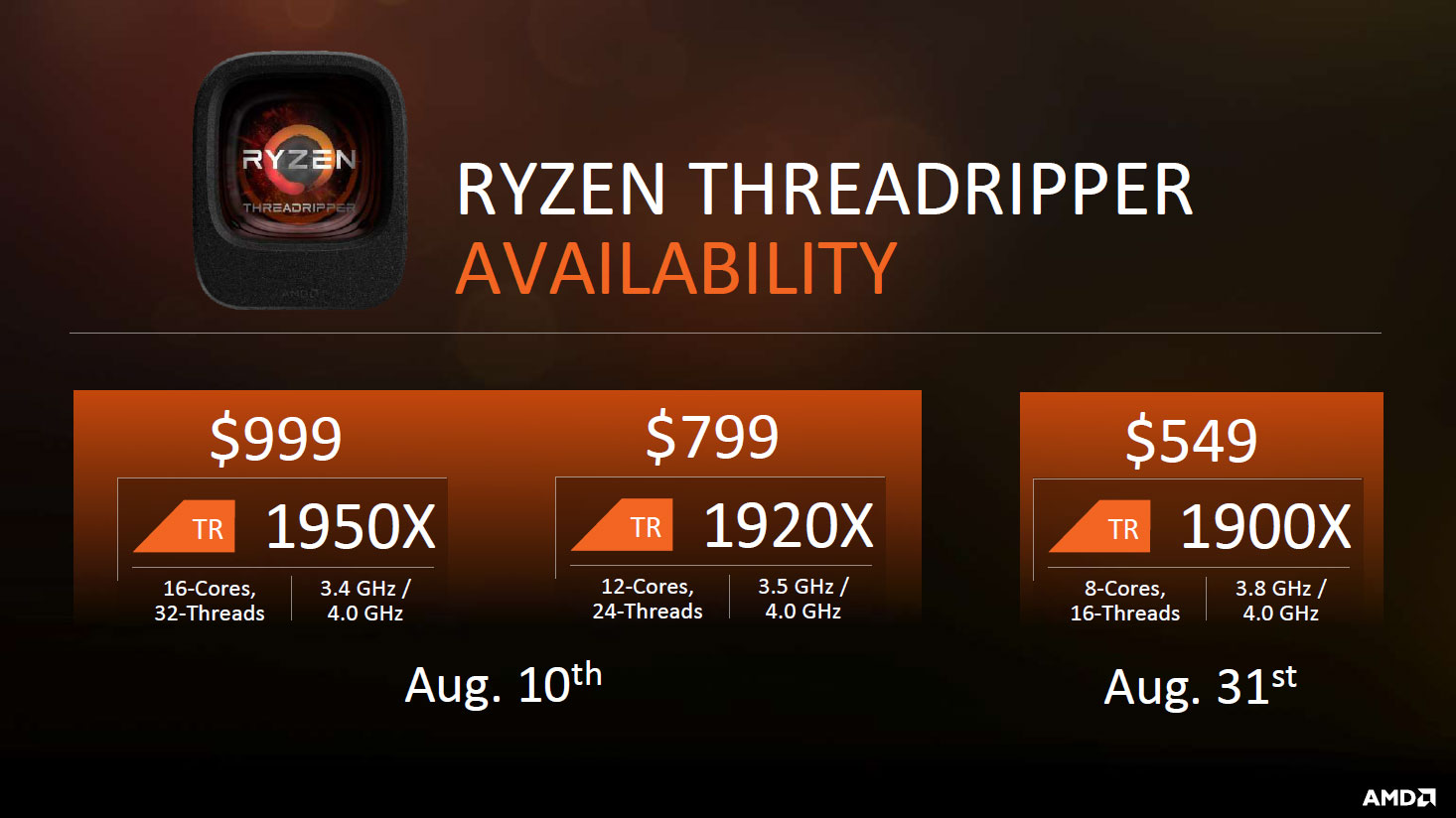
Retail availability for Ryzen Threadripper will start on August 10, with both the 1950X and 1920X available. The 1900X will launch at the end of the month on August 31. Full reviews for Threadripper will be up on launch day, so stay tuned.
Jarred's love of computers dates back to the dark ages when his dad brought home a DOS 2.3 PC and he left his C-64 behind. He eventually built his first custom PC in 1990 with a 286 12MHz, only to discover it was already woefully outdated when Wing Commander was released a few months later. He holds a BS in Computer Science from Brigham Young University and has been working as a tech journalist since 2004, writing for AnandTech, Maximum PC, and PC Gamer. From the first S3 Virge '3D decelerators' to today's GPUs, Jarred keeps up with all the latest graphics trends and is the one to ask about game performance.


